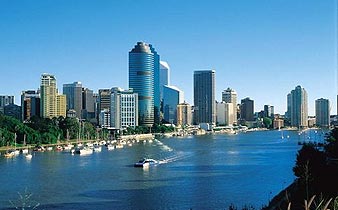Brisbane Typesetting Service for Arabic

If you have an InDesign file that requires translation from English to Arabic or from Arabic to English, we can translate and typeset the translation for you within the InDesign files. Besides InDesign files, we accept Illustrator, Photoshop, Powerpoint or any other popular file format.
For larger files, you may use file-sending services such as yousendit.com or wetransfer.com.
Choose our Arabic Typesetters
- Typesetting of Arabic text by experienced Arabic typesetters
- Huge range of foreign language software and fonts by our Arabic typesetters
- Output to your desired format
Use this form to attach your files and send to us for a free quote.
Arabic Translation and Typesetting
Where a program cannot directly take the fonts of a particular language, typesetting is normally completed in Illustrator and placed back in the original design file as curved EPS files. We have considerable experience in larger multi-language typesetting projects where a consistent design and feel must be produced across several languages. This involves the coordination of Asian and European font styles, point sizes, leading, etc.
We provide professinal brochure translation and typesetting services no matter where you are based, contact us for a free quote.
More About The Arabic Language
Arabic is a name applied to the descendants of the Classical Arabic language of the 6th century CE. This includes both the literary language and the spoken Arabic varieties.
The literary language is called Modern Standard Arabic or Literary Arabic. It is currently the only official form of Arabic, used in most written documents as well as in formal spoken occasions, such as lectures and news broadcasts. In 1912, Moroccan Arabic was official in Morocco for some time, before Morocco joined the Arab League.
The spoken Arabic varieties are spoken in a wide arc of territory stretching across the Middle East and North Africa. The modern written language (Modern Standard Arabic) is derived from the language of the Quran (known as Classical Arabic or Quranic Arabic). It is widely taught in schools, universities, and used to varying degrees in workplaces, government and the media. The two formal varieties are grouped together as Literary Arabic, which is the official language of 26 states and the liturgical language of Islam. Modern Standard Arabic largely follows the grammatical standards of Quranic Arabic and uses much of the same vocabulary. However, it has discarded some grammatical constructions and vocabulary that no longer have any counterpoint in the spoken varieties, and adopted certain new constructions and vocabulary from the spoken varieties. Much of the new vocabulary is used to denote concepts that have arisen in the post-Quranic era, especially in modern times.
Arabic is the only surviving member of the Old North Arabian dialect group, attested in Pre-Islamic Arabic inscriptions dating back to the 4th century. Arabic is written with the Arabic alphabet, which is an abjad script, and is written from right-to-left. Although, the spoken varieties are often written in ASCII Latin with no standardized forms.
Arabic Typesetter in Brisbane

Brisbane is the capital and most populous city in the Australian state of Queensland and the third most populous city in Australia. Brisbane's metropolitan area has a population of approximately 2.1 million, and the South East Queensland urban conurbation, centred around Brisbane, encompasses a population of more than 3 million. The Brisbane central business district stands on the original European settlement and is situated inside a bend of the Brisbane River, approximately 23 km (14 mi) from its mouth at Moreton Bay. The metropolitan area extends in all directions along the floodplain of the Brisbane River valley between the bay and the Great Dividing Range. While the metropolitan area is governed by several municipalities, a large portion of central Brisbane is governed by the Brisbane City Council, which is by far Australia's largest Local Government Area by population. The demonym of Brisbane is Brisbanite.
Brisbane is named after the river on which it sits, which, in turn, was named after Scotsman Sir Thomas Brisbane, the Governor of New South Wales from 1821 to 1825. The first European settlement in Queensland was a penal colony at Redcliffe, 28 kilometres (17 mi) north of the Brisbane central business district, in 1824. That settlement was soon abandoned and moved to North Quay in 1825. Free settlers were permitted from 1842. Brisbane was chosen as the capital when Queensland was proclaimed a separate colony from New South Wales in 1859.
The city played a central role in the Allied campaign during World War II as the South West Pacific headquarters for General Douglas MacArthur. Furthermore, Brisbane has hosted many large cultural and sporting events, including the 1982 Commonwealth Games, World Expo '88 and the final Goodwill Games in 2001. Brisbane is the largest economy between Sydney and Singapore, and as of 2008 is classified as a Global city. It was also rated the 16th most livable city in the world in 2009 by the Economist Intelligence Unit.1

